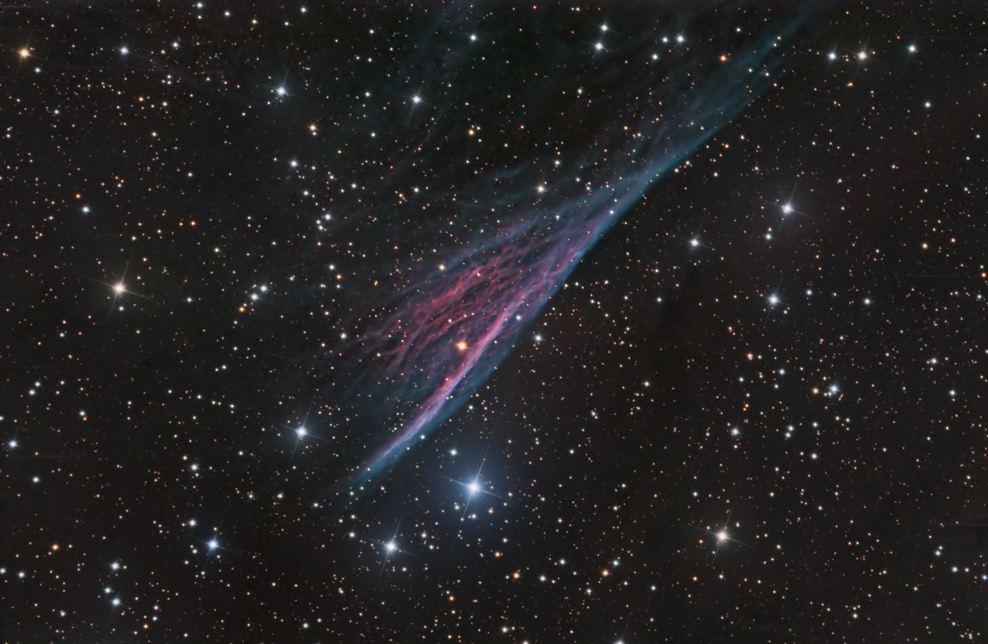

NGC2736 is a small piece of a supernova remnant in the constellation Vela (in the sky in the southern hemisphere). A supernova is a dramatic event that happens when a very massive star
(at least 8 times the mass of our sun) runs out of fusionable material and collapses into its core, triggering a massive explosion. This explosion results in a brightness that exceeds the
total brightness of a typical galaxy. The outer part of the star is expelled at great velocity; the Vela supernova initially had a velocity of some millions of miles per hour, and has since slowed
(as it has gathered other space dust) to about 400,000 miles per hour. This explosion was seen in our sky about 11,000 years ago, and took place only about 815 light years from Earth; it would have
been easily visible during the daytime on Earth. The pencil nebula is about 5 light years long.
The supernova remnant is formed as the shock wave from the explosion gathers in interstellar dust, explaining its delicate, curvy shape. The dramatic colors are the result of ionized hydrogen
(the reddish hue) and ionized oxygen (the blueish hue).
Copyright 2016 Mark de Regt